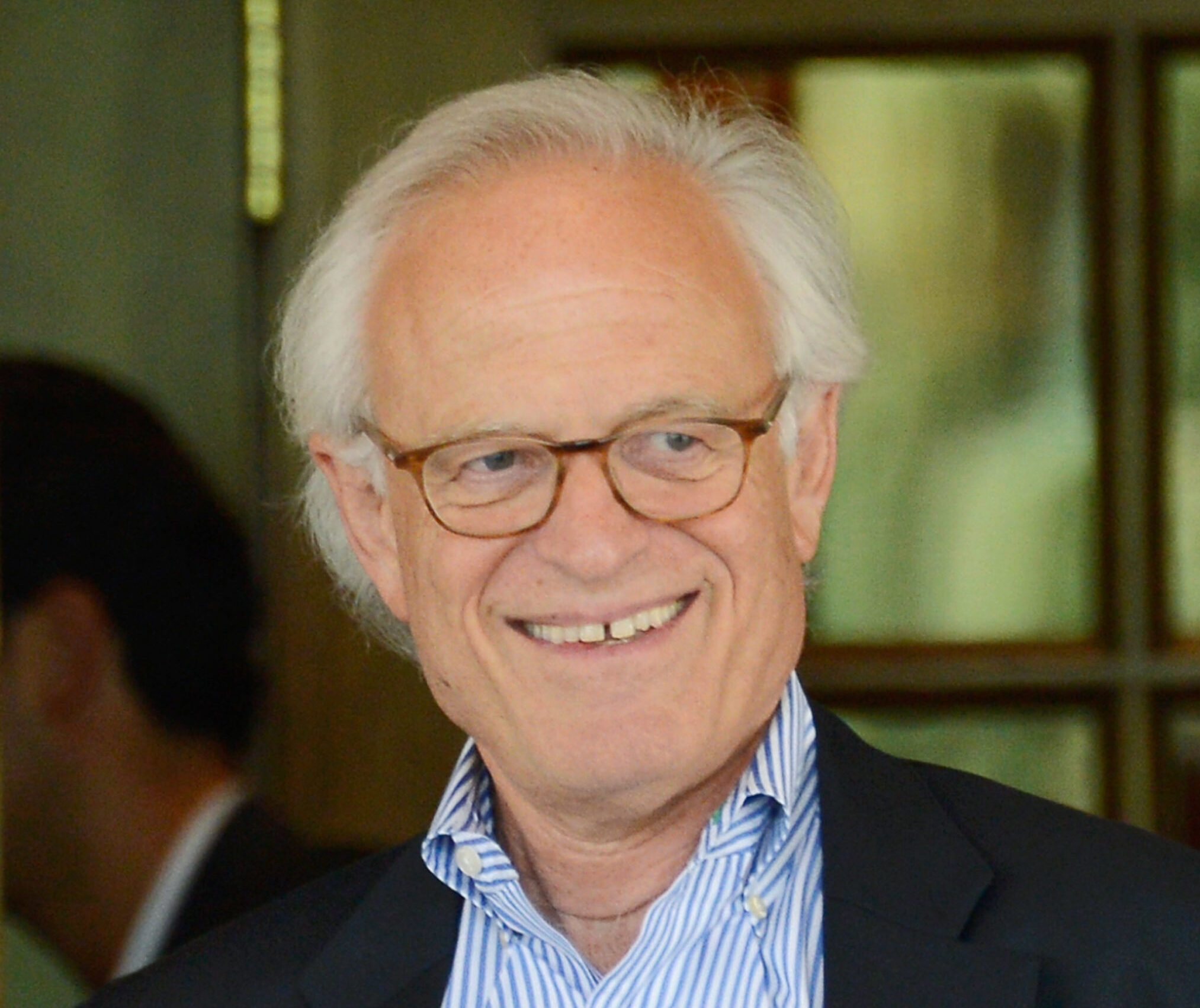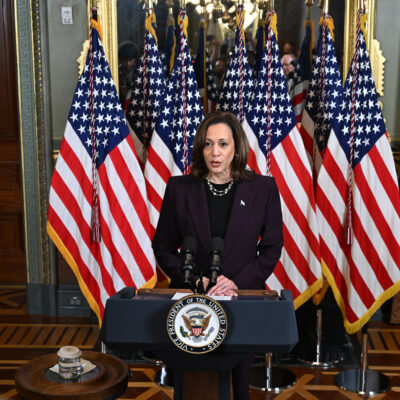Survey of Jewish students shows antisemitism varies greatly, campus to campus
Brandeis, Duke, WashU, Tulane and the University of Florida are among the most welcoming campuses for Jews, according to a new study

Spencer Platt/Getty Images
Students participate in a protest in support of Palestine and for free speech outside of the Columbia University campus on Nov. 15.
When researchers at Brandeis University set out in 2016 to measure antisemitism on college campuses across the country, they found a small number of “hotspot” schools where Jewish students faced a hostile environment.
Now, in a new survey in the wake of Oct. 7 and the ensuing war between Israel and Hamas, that same team of researchers has found many more “hotspots” — including top universities such as Columbia, NYU, the University of Pennsylvania and the University of California, Berkeley — where hostility toward both Jews and Israel is increasing dramatically.
Yet the study, “In the Shadow of War: Hotspots of Antisemitism on US College Campuses,” found that at a number of other top schools, including Duke, Washington University in St. Louis, Tulane and the University of Florida, Jewish students report far lower — though still significant — levels of antisemitic hostility.
The study, which according to its authors is the first to identify levels of antisemitism at specific campuses and to compare campus levels of antisemitism since Oct. 7, was conducted by the Maurice and Marilyn Cohen Center for Modern Jewish Studies at Brandeis University and released on Thursday evening.
“There’s no question that after Oct. 7 there has been a dramatic increase in the level of antisemitism on campuses,” Leonard Saxe, one of the study’s authors and a Brandeis professor of contemporary Jewish studies and social policy who heads the Steinhardt Social Research Institute and the Cohen Center, told Jewish Insider. “But one of the most important takeaways of this study is that there’s a huge amount of variance among campuses… not all campuses have the high rates of antisemitism that are perceived on the campuses in that top quartile.”
The 31-page study describes Jewish students’ perceptions of antisemitism on 51 U.S. college campuses (19 private and 32 public colleges and universities) since the Oct. 7 terrorist attacks in Israel.
It was based on survey data collected from nearly 2,000 Jewish undergraduate students at schools with large Jewish student populations. The sample consisted of U.S. applicants to the Birthright Israel program who were undergraduates at one of the 51 schools during the 2023-24 academic year. The campuses were selected based on the number of Birthright applicants who were likely to be undergraduate students at these schools in the 2023-24 academic year.
Students were questioned based on an “index of hostility,” which included three questions: the extent to which they agreed there was a hostile environment toward Jews at their school, the extent to which they agreed there was a hostile environment toward Israel at their school and their level of concern about antisemitism on their campus.
The research built on the 2016 study by the same team that found that antisemitism on campus was concentrated at a small number of “hotspot” schools, including public universities (such as CUNY-Brooklyn and several University of California campuses) and private universities (such as Northwestern and Boston University). Most, but not all, of the schools included in the 2016 study were used in the new one as well.
“The overall [hostility] level compared to 2016 was much larger,” Saxe told JI. “When we did the study in 2016, it wasn’t in the midst of a hot war.”
The new study found that schools with the highest quartile of reported antisemitic hostility were: Boston University, Columbia University, The George Washington University, New York University, The Ohio State University, Queens College, University of California, Berkeley; UCLA, University of California, San Diego; University of Michigan, University of Pennsylvania and University of Wisconsin.
At these schools, 85% of respondents agreed at least “somewhat” that there was a hostile environment toward Jews at their school, with 23% “strongly” agreeing. Nearly all respondents at these schools (94%) agreed that there was a hostile environment toward Israel at their school, with half “strongly” agreeing, and 57% saying they were “very concerned” about antisemitism on their campus.
The study found that Jewish students at these schools were more likely to report experiencing insult or harassment in person and on social media, seeing antisemitic images, slogans or graffiti, and being blamed for the actions of the Israeli government because they were Jewish.
However, compared to the difference in overall perceptions of hostility, significantly less variation between schools was found in regard to these incidents.
The schools with the lowest reported quartile of antisemitic hostility were: Brandeis University, California Polytechnic State University, Duke University, Florida Atlantic University, Florida State University, Pennsylvania State University, Tulane University, University of Central Florida, University of Colorado – Boulder, University of Delaware, University of Florida, University of Miami and Washington University.
Saxe noted that, overall, he expected each school to rank as it did. “But we do think the systematic data we’re presenting gives a somewhat different impression of what’s going on on college campuses than the most of the media are reporting, [which has been focused] on select elite Northeast schools. We show that there’s a substantial number of schools in the hostile grouping that are public universities,” he told JI.
“Across the board, antisemitic incidents don’t necessarily predict how the environment is perceived to be,” Saxe continued, pointing to Tulane, which ranked in the lowest quartile of perceived antisemitic hostility despite dealing with a violent pro-Palestinian rally in October. “That suggests that there are some things about these campuses, about what the administration and faculty do, that makes them safer places for Jewish students than others.”
Even at the schools with the lowest levels of antisemitic hostility, almost half (49%) of respondents agreed at least “somewhat” that there was a hostile environment toward Jews at their school, although only 4% strongly agreed. Sixty-three percent of students at the schools with the lowest level of antisemitic hostility also agreed at least “somewhat” that there was a hostile environment toward Israel at their school, while 23% were “very much” concerned about antisemitism on their campus.
The research also found that at all schools, students were more concerned about antisemitism related to criticism of Israel than they were about antisemitism related to traditional anti-Jewish stereotypes. Concern about antisemitism related to criticism of Israel was not limited to those who, in the context of the war, had favorable views of the Israel government: Even among those who had unfavorable views of the Israeli government (44% of all respondents), nearly half (45%) were very concerned about antisemitism related to criticism of Israel.
In the context of the war, at all schools, Jewish students were significantly more concerned about antisemitism originating from the political left than they were about antisemitism from the political right. Worry about antisemitism from the political left was not limited to politically moderate or conservative Jewish students: 41% of liberal Jewish respondents were very concerned about antisemitism from the political left (54% of all respondents were liberal).
The researchers found that Jewish students are most likely to encounter anti-Israel hostility from other students on campus, as opposed to faculty or administrators. At the most hostile schools, about 80% of Jewish students reported encountering hostility toward Israel from other students “sometimes” or “often.” At these schools, 30% also reported encountering hostility toward Israel from faculty.
”In the Shadow of War” also found that Jewish students at campuses with higher levels of antisemitic hostility were much less likely to feel fully safe or comfortable on their campus and much less likely to feel that they “very much” belonged. However, no significant association was found on any campus between the levels of antisemitic hostility and Jewish students reporting that concerns about antisemitism affected their daily lives.
The study’s authors said that the report is the first in a series aimed at identifying evidence-based strategies for effectively responding to campus antisemitism.
“We describe a bit about attitudes and perceptions of Jewish students and how they’re different on high-hostile versus low-hostile campuses. We have more data about exactly what words and actions we’re seeing as antisemitic and we haven’t fully analyzed that yet,” Saxe continued,” adding that the authors intend to “link levels of perceived hostility on campus to policy of academic leadership and to demographics of the campus and see if we can find campus-level predictors of antisemitism on campus.”
“We want to help universities navigate the waters to better address the feelings of unsafety that Jewish students feel on some campuses, and there should be systematic predictors of this that could be changed by better policies and programs,” he said.









